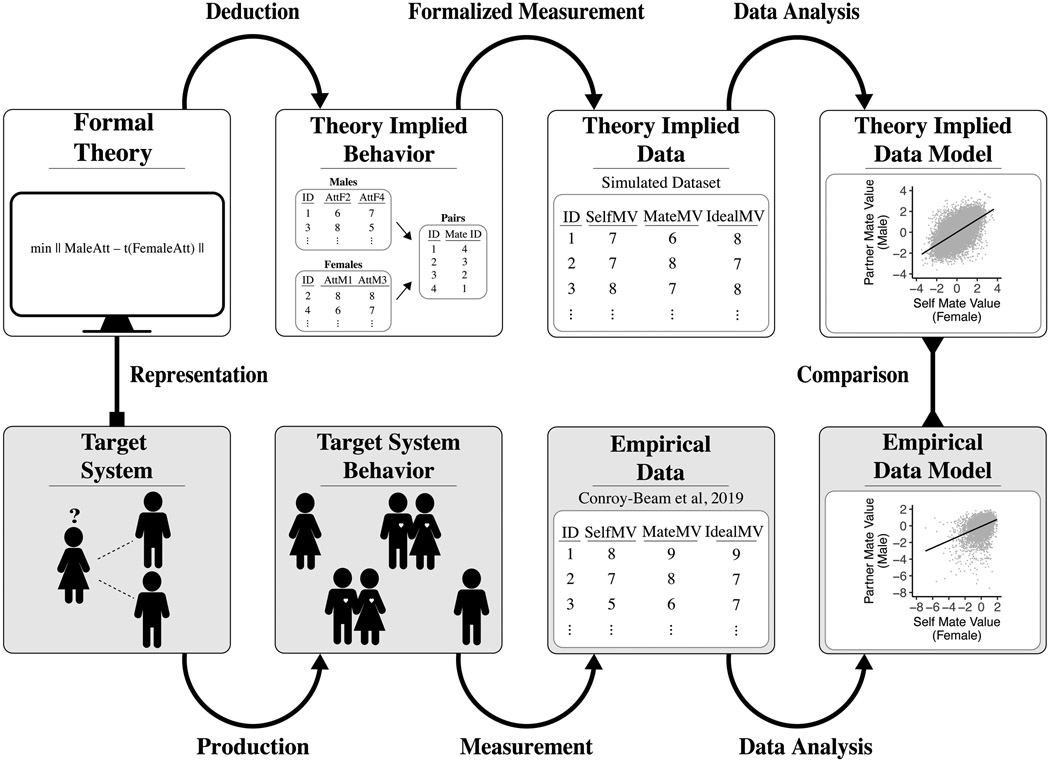Figure 2:
Formal theories can be used to precisely deduce the data models we should expect from our theory. First, the deductive fertility of formal theory is leveraged to deduce the theory-implied target system behavior (e.g., how attraction and mate selection choices play out across generations). Second, using a formalized set of assumptions about how the components of that system are measured, we can produce theory-implied data (e.g., calculating an overall "mate value" for each agent on the basis of their traits and the preferences of potential partners). Finally, we can analyze the data to produce a theory-implied data model using the same statistical analyses used in our empirical data. Here, we examined the correlation between an agent’s mate value (calculated as the euclidean distance from the agent’s traits to the average preferences of members of the opposite sex) and that of their selected partner, with correlations examined within a series of individual samples (each of 45 countries in which data was collected for the empirical data and each of 225 simulation iterations for the formal theory). By comparing the theory-implied data model with a data model derived from empirical data, we can gain insight into the adequacy of the theory as an explanation of a given phenomena and as a representation of the target system. Just as importantly, we can use any discrepancies between these data models to improve the theory, inferring the best explanation for the observed discrepancy and, thereby, identifying potential avenues for further theory development. Here, the theory-implied data model produced by the formal Maximize Similarity Theory demonstrates that the theory can account for the matching phenomenon: agents with higher mate value tended to partner with other high mate value agents.

